AGENDA
LA CENTRAL DEL CIRC
TRAINING
CREATIVITY AND RESEARCH
The objective of the Transits residency program is to offer support to the companies that are in need of a physical space and support to carry out their artistic projects (research, creation, rehearsals, etc.), encouraging artists to take a more active approach to research and challenge their work.
In order to meet the needs of the stage in which the creative process of an idea or project finds itself, and enable true progression, we’re proposing various residency formats, accessible to artists and companies following a public call held in November.
However, the format and conditions of the residencies evolve each year, in order to maintain their relevance and be up to date with contemporary circus reality.
Here you can read the rules and requirements of the last public call.












Artists and companies in residence


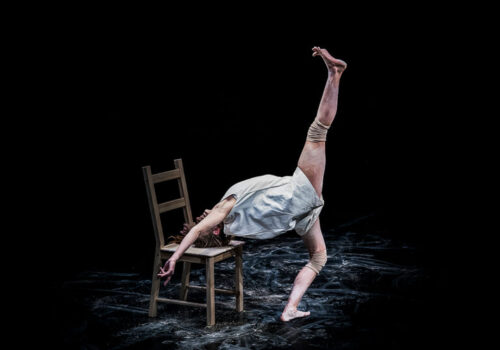


Aurora Caja (Palma de Mallorca) studies plastic arts at the Escola Massana in Barcelona and beaux-arts at the University of Barcelona. She continues her training at the FLIC Scuola di Circo in Turin, Italy. There she specializes in the discipline of verticals. Her first project is called En Perill d’Extinció (2016).
She also takes part in creative labs with professionals like Tomic, Jean Michael Guy and Volmir Cordeiro, Roberto Magro, Marta Torrents, Eva Ordoñez, Cristian Coumin and Pau Portabella.
In 2018 she starts the development of her first show, No verbal. In October 2021 she takes part in the FOCON training at the ÉSACTO Lido (École Supérieure des Arts du Cirque Toulouse-Occitanie, FR). In 2022 she presents No verbal in the form of a tour at the Picasso Museum in Barcelona, as part of the Creació i Museus device and within the Grec Festival schedule, in Barcelona. The show is produced by La Central del Circ and the Picasso Museum.
At the same time, she continues to work as a visual artist, in collaboration with Cia. Eia, Joan Català, and also independently. In 2022 she creates the exhibition Out of the Box.
No verbal
“No verbal” transcends into an intimate dimension; into a placenta, into a mental space. It’s a discovery trip which reveals itself the same way light penetrates darkness.
It’s a physical story that talks about being human from her most carnally honest perspective. A struggle to find her own voice in a world overwhelmed by noise. A rebellion.
In a plastic universe, the body defines the narrative. Its language is made of balance, acrobatic motion, contortion and drawing.
Photographer: Gaby Merz
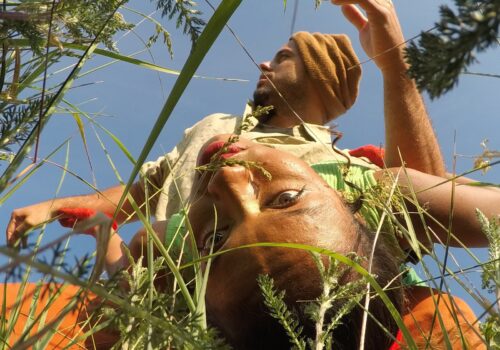


It was at the Crescer e Viver circus school, in 2011, where Cássia and Rodrigo met for the first time. During training, Cássia continued her drama studies and Rodrigo began a technical course on contemporary dance. Together with 10 other students, they form Cia Circo no Ato, with which they produce 4 performances in 5 years, they specialize in acrobatic poses, travel all over Brazil and become a reference in the Rio de Janeiro circus. In 2017 they take their most recent performance, A Salto Alto directed by Roberto Magro, on a European tour, passing through Spain, Italy, Portugal and Belgium. During this time, they decide to expand their stage research as a duo and they begin a new training at the Lido Circus School, in Toulouse.
Once they completed this training, they commenced a small, 15 minutes, project called Despir, joining UBA, the new creation from Bordeaux’s Smart Cie, which premiered on July 9th 2022. At the end of 2021 they begin imagining their first long performance: Rupestre.
‘Rupestre’
‘Rupestre’ is a poetical and corporeal license to merge past, present and future created as a surreal escape to the prehistoric origin of humanity. The intention is to reconstruct, expand and synthesize symbols, images, tools and movements capable of provoking a reflection contained in gender equality and the preservation of nature.
Music plays a main role in this show. The instruments will be played on stage with the help of a loop pedal. The plot develops from percussion, the first sound impulse of primitive man: through the clash between objects, the noises are transformed into sound, then into rhythm, melody, dance and a circus show.
‘Rupestre’ immerses itself in a trance as a language of memory, with the body conceived as the guardian of ancestry and our greatest tool to access the past and co-create a more equal and diverse future.
Firma foto: Benoit Martrenchar
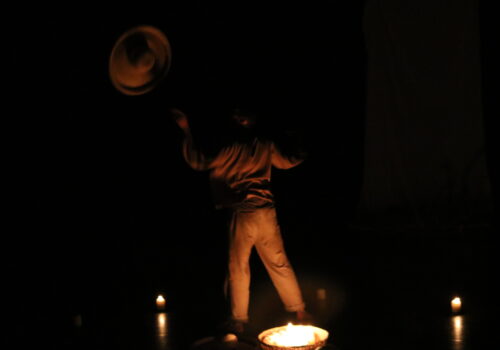


Soa Payet, stage author, works with memory, the one that will be and the one that will become following our present actions. It’s about rediscovering the stories that arise from the circus imaginary, in a more extensive sense, where dance, text and circus object mix.
He grew up between the Paris region, the island of Reunión, Columbia and finally Ecuador. He trained as a circus artist at the Amiens, Montpellier, Brussels and Toulouse circus schools.
He was a dance, clown, Butoh and theater apprentice. All these fields led him to focus his work on his own roots, to understand that which traverses generations and demands listening to.
Zoé Debary, in theater, carried out an academic research on circus gestures and words. From her trapeze-dance, she came down to the stage floor to take a step into the choreography of bodies through GAGA (GAGA MOUVEMENT) dance and the actor’s opening thanks to the Chekov training, in Brussels. Following her experience, she accompanies circus artists in their creations, «Circus remix» from Tercer Circ (2017-2018), «No puc morir» from Cie La Gesti (2019-2020), «PAPY» from Lucha Emilia (2020-2022).
Her research resonates in her works and her works resonate in her research. How do we embody (drama)circuses?
La memòria de la Pepa
Our project came to life between the mountains of Medellín and the heights of Reunión. We’re looking to formulate our internal screams. Screams of uprooting, screams hidden in crammed throats, silent screams that are heard from the bottom of the earth, screams of our ancestors and descendants.
“La memòria de la Pepa” is a circus story, the story of Pipo, a globetrotter. Remember, remember, make it materialize, bring it to light, the terrific spirit of the colonial plunderer and the depth of the jungle. Juggling with his “toquilla” straw hats, his candles, his dangling fabrics, he structures the space and his time. Pipo transforms and creates his own rituals, he dances his loss, with love.
We don’t choose to represent any culture in particular. We choose to invent a story inspired by the memory of our elders and its role in today’s questions which demands new formulations. We gather in the history of our memories to find fragments of what has been lost and what has to be reinvented.
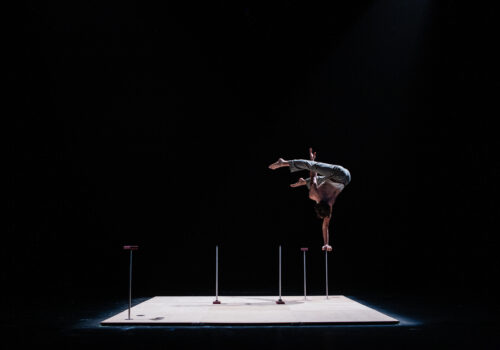


Born May 2nd 1998 in Badajoz, Extremadura region of Spain, where there are many oak trees. He was less than two years old when he was dancing to Sonia y Selena in the living room of his house, imitating each choreography from his sister’s graduation VHS tape. When he was eight years old, he wrote a poem to Virgin Mary and the rest is history.
He did his professional training at Carampa, between 20016 and 2018, and during the next course he became a part of various Freestanding Courses at DOCH, School of Dance and Circus (Stockholm), of different specialties of his discipline, hand balance acts and a course on the artistic development within circus disciplines.
In June 2019 he takes the tests and is admitted at the Brussels Higher School for Circus Arts, and three years later he graduates, and has longer hair, and he likes rain less, and he likes coffee more, and writing more, and the circus more, I suppose. He also receives his Master’s degree in Poetry from the Madrid Writer’s School and is part of the Simul Solus Collective. El patio is his first solo project as a creator/artist.
El patio
‘El patio’ is an interdisciplinary research project that plays the part of experimenting with intimacy, desire and the power of language through the stage fusion of poetry and circus, using acro-dance, hand balance acts, live writing, sound works and voice as means and channels to express.
There’s a factual meeting point between the two disciplines, from which the skeleton of the project is born: the way in which they use pure technique as a creativity channel and form as the final object. Building a space within a space, “El patio” plays with the limits between the truly intimate and the completely public, as when you try to disclose or share something intimate, its very intimate quality vanishes and it acquires a new dimension for a few seconds.
“Intimacy is a fish flopping between two oily hands and I’m losing oil, a lot of oil”.
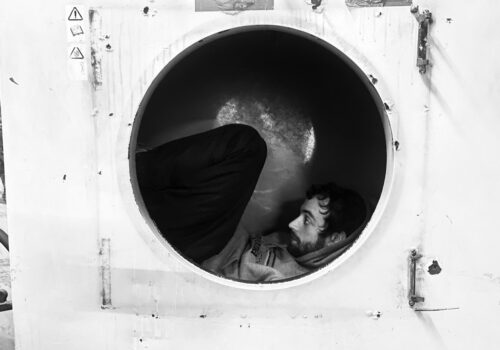


Born in Reus, he trained at the Rogelio Rivel circus school in Barcelona (2010-2012), the Pekin International Art School and ÉSACTO Lido in Toulouse (2014-2016)
He specialized in hand balance acts, torsion, dance and theater. Co-creator of the Random company. CircusNext 2019 prize winner.
He performed in different European locations, at the Circ d’Hivern de l’Ateneu Popular 9Barris and Mercat dels Flors (Barcelona), the Theatre de la Cité International (Paris), CircoBalkana (Croatia), La Grainerie (Toulouse), Halles de Scharbeck (Brussels), Mesopotàmia Circus (a festival in Türkiye). He danced with artists from Krump, Butoh, African dance, raves and elite level Bachata.
‘Candy’
“I encountered certain difficulties when going back to regain possession of myself. It’s a strange experience. Perceiving the legs as separate objects, estranged from the mind, to which they’re connected almost by chance. Imagine yourself with skepticism, as a pile of flailing members… and one needs these members, needs them desperately, but even so, sometimes, they seem very strange, very strange. The legs, above all.”
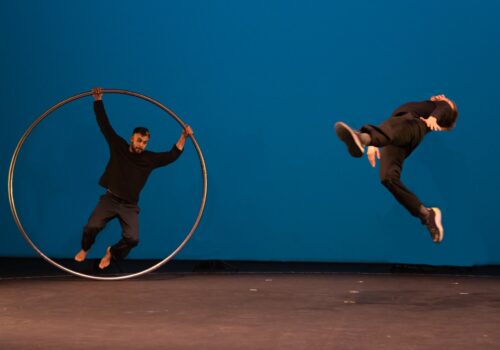


Felipe Nardiello
His artistic path begins with the separation from the world of psychology (the profession he was dedicated to) and opening up to the circus. He studied at the FLIC circus school in Italy, where he specialized in Cyr wheel.
Ginés Belchí Gabarrón
He begins his professional studies at the Rogelio Rivel circus school in Barcelona, following which, he studies at the ÉSACTO Lido, in Toulouse, where he specializes in acro-dance.
At the end of his studies, he creates and acts in the El costat fosc de les flors performance, takes part in the Circ d’Hivern SOPA de l’Ateneu Popular de Nou Barris and in the latest creation of the Primavez (France) collective –Intudewail.
Que me tiren al mar
‘Que me tiren al mar’ infiltrates an intimate, relational dimension, in an emotional space. It’s a voyage trying to connect with the general theme of problems, through physical emotion.
Quin és el teu problema?
It’s a physical story talking about being human from a problematic capacity, a fragility capacity, a capacity to question how the modern subject relates to its own life.
Quina és la teva solució?
In an abstract philosophical universe, the bodies and the Cyr wheel articulate the discourse. Their words are built for the acrobatic movement of two bodies, the emotional relation between these two and a Cyr wheel, which urges cyclical and circular situations, which can become either problems or solutions.



Cavitat f.
Each body is a synthesis of his own history. Memory can be explicit when we can reasonably explain or describe a concrete experience, or implicit when the body reacts to experiences that cannot be processed by the mind. “Cavitat f.” is an artistic project that investigates the materialization of memory in the body, or in other words; embodied memories: everything that is recorded on the body as a movement, gesture, sound or posture in memory (mostly unconscious) of a concrete experience. The idea is to facilitate a work that puts the body in relation to the codification of these memories, to understand the forms and their learning processes, to see which ones and why they have been forgotten and if it is necessary to make them visible and perhaps resignify them. The project wants to observe how the context affects all this and also the relationship between two or more bodies and think how to generate collective body memories.
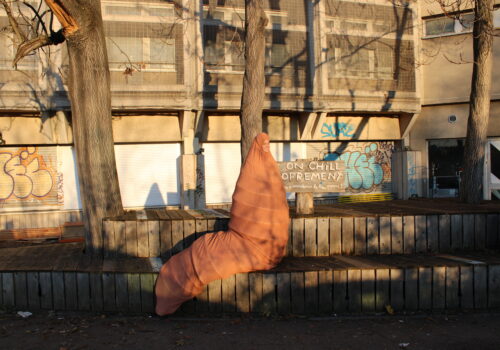


Abby Neuberger and Luca Bernini met at the FLIC circus school in Turin in 2012, where American gymnast and Italian jonglor began working together hand-in-hand and physical theatre, to create a body vocabulary typical of their duo. Together they entered Fratellini Academy in 2014 where they continued to perfect their aerobatic technique and developed their research around a playful and absurd imaginary (Willy Axton 2016; Morning 2017). Since its premiere in 2017, they create their first show, Compost.
Abby and Luca believe that the performance is an act of living in the present, in the space they are in, as well as a discovery of surprising things, the unexpected, with the audience. With the Keep Company, which they create in 2019, they want to question our collective relationship on earth and defend the performing arts as legitimate means of opening discussions about the environment. And through the show, they continue to look for what human beings can mean, through humour and laughter.
‘Underfoot’
With ‘Underfoot’, we’ll deal with the subject of nature through the angle of decomposition, of what happens after death, of the transformation of matter into another way of life, or into another living being. The team will be interested in the decomponent actors (or transformers): worms, protocharion, bacteria; for chemical reactions that are the basis of substance transformations; for reactions between atoms that create new substances without loss or addition of components. And through their language, mixing physical theater and hand-to-hand techniques, they will try to represent these reactions and relationships.
In a longer range, echoing its first creation ‘Compost’, Abby Neuberger and Luca Bernini attempt to follow the history of life cycles: evolutions and changes of geological times, and the trails left by changes of species after thousands of years of life on Earth.



Ino
Seven women, do not have much weight in this world.
So we thought: “What if.. we pile each other up?” INO is us, dressed in various layers of social conventions, just like everyone else. Layers that bother us and that don’t allow us to move freely.
We grab one another by our clothes, we pull each other, we help each other to remove the layers that cover us. We realize that it’s heavier to carry the weight of social expectations than that of our own bodies.
We hold onto one another, we cling to each other, we support each other. Simply it is what we want to do, together.
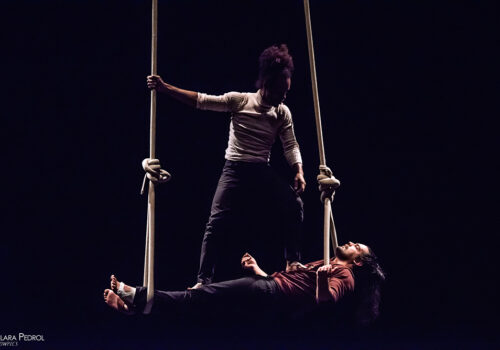


La companyia neix en 2018 a la ciutat de Rio de Janeiro. En aquest moment, Thiago Souza i Roberto Willcock són estudiants de l’Escola Nacional de Circ do Brasil. Tots dos s’adonen que comparteixen la passió per la tècnica de la corda llisa però, al mateix temps, un sentiment d’insatisfacció amb l’aparell.
Amb la idea de buscar altres possibilitats a més de la clàssica tècnica de corda, els artistes van iniciar la seva recerca. Les cerques pretenien plasmar les següents preguntes: com trencar amb la idea de verticalitat/altura en la corda llisa? Com fer nusos, no sols de forma vertical? El 2019 els artistes es muden a Itàlia per estudiar a la FLIC i treballen amb Flavio D’Andrea, Roberto Magro, Florent Bergal i Eva Ordoñez. Aíxí, treballen actualment en la que és la seva primera creació.
Cá Entre Nós
“Quan ens acomiadem amb la promesa de no estar lluny per més de 10 dies, vaig saber que no seríem capaços de complir aquesta promesa… Encara tinc espai per a tu, aquest tu en el qual t’has transformat lluny de mi… ”
La revelació de la intimitat, o millor dit, de la súper intimitat. Fora mida, però que succeeix aquí i ara, entre nosaltres. “Cá Entre Nós” exterioritza l’ambivalència entre poder i dependència, riscos i confiança en les relacions, que sorgeixen en un temps i un espai coincidents. “Cá Entre Nós” és una expressió brasilera que podríem traduir com “entre nosaltres”. Però no per casualitat, en portuguès, la paraula “nós” (nosaltres) també es pot traduir com a “nus”. Al mateix temps, “cá” (aquí) reforça la idea d’un aquí i un ara. Així, “Cá Entre Nós” és una narrativa creada a partir de la relació entre els cossos presents en escena i es desenvolupa a través, sobre i en funció de l’elaboració de nusos.
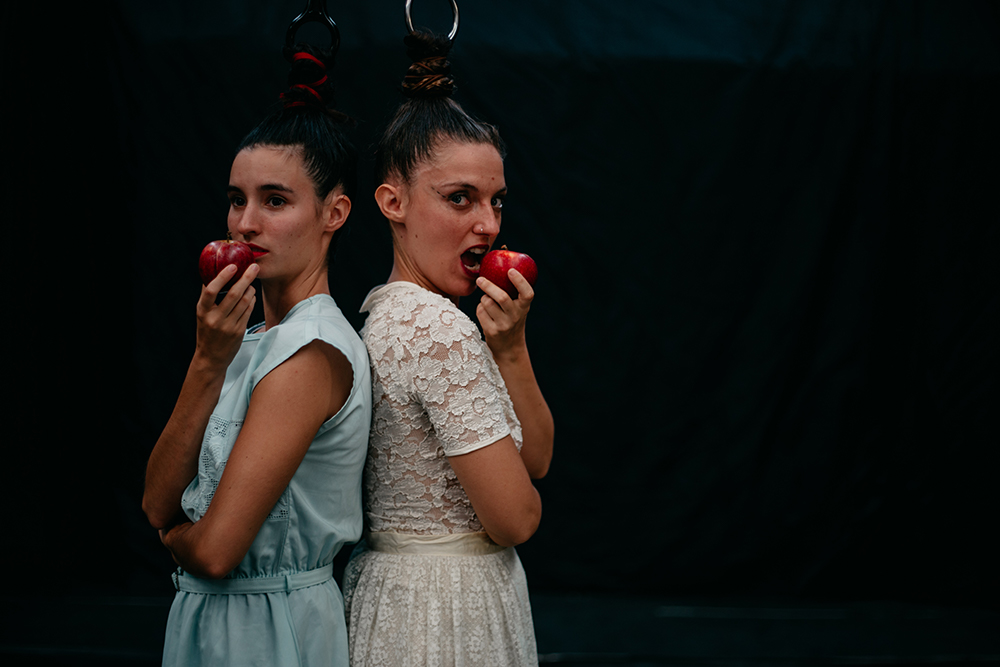


Elles
A multidisciplinary show. A combination of circus, movement and live music searching for a language that will define them.
They investigate identity and gender, treating them from a fresh point of view. A stage concert of electronic music where two people walk the scene in a continuous ecstasy and bewilderment, questioning their identities and their way of relating to each other. Questioning her identity as women and the clichés they are associated with. What is a woman? What is a man? What are we if we are nothing?
Out of control, they step on glass, they mix music live, they play instruments face down at several meters high, they suspend each other by the hair, they throw darts, they explode apples, they eat them and form body structures impossible to decode.
Picture: Mar Bautista
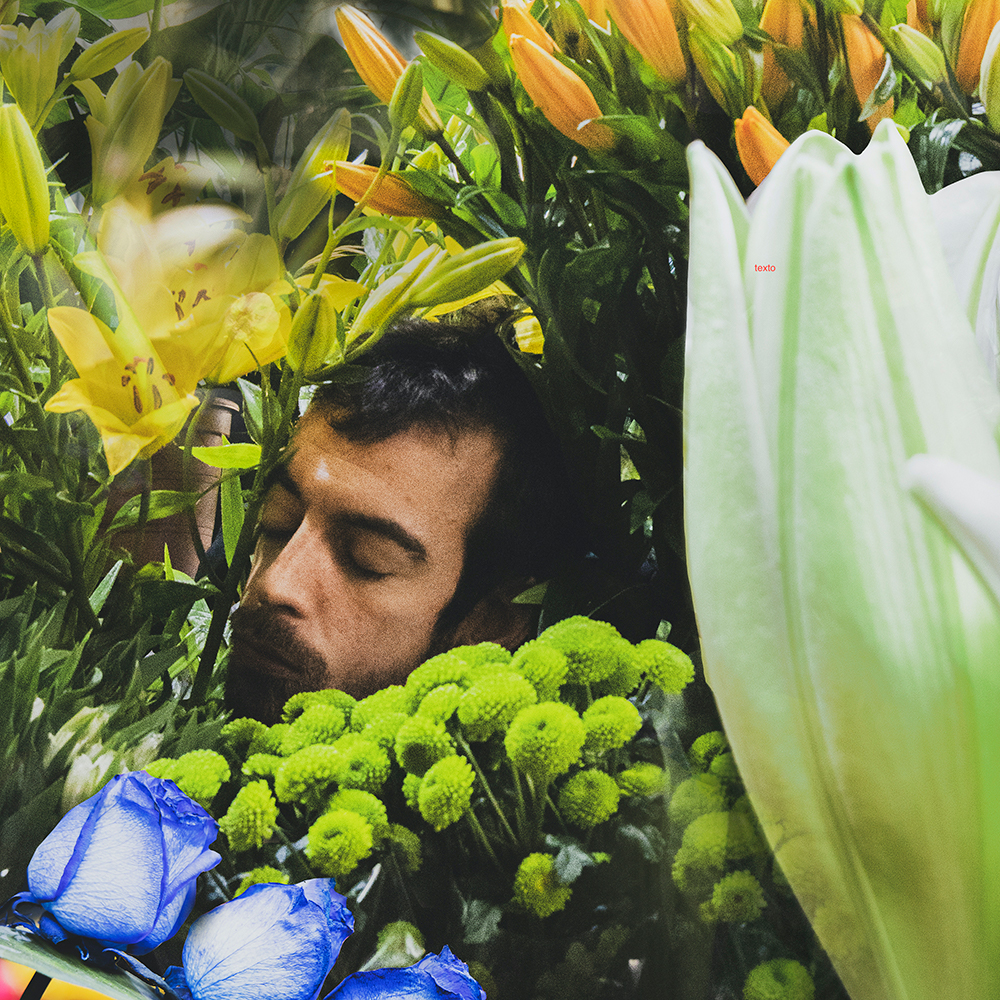


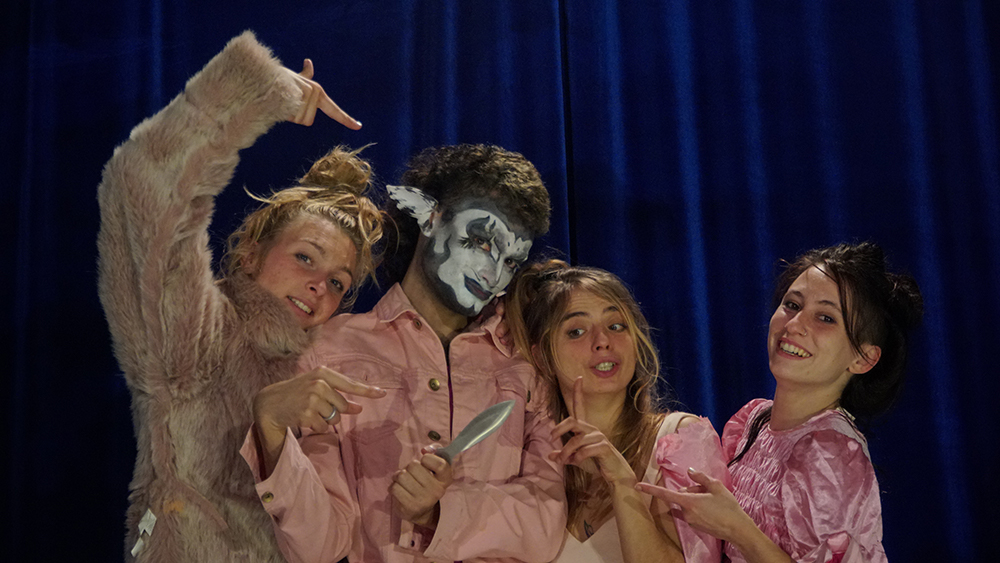


Niebieski
Four people enter a blue room, as a plane about to take off. A space of emotional management which reveals its system, adapting and offering what is necessary to modify and move freely within those aspects that society calls unworthy and secret.
They will appropriate symbols of popular culture through playing with the everyday objects that the room provides. A circuit where painfulness and dirtiness mutate into a ritual of initiation of which they were deprived. To develop a way to relate to the emblems of patriarchal binarism will lead to a collective narrative. They will put empathy into practice, to navigate all the processes of turning empowering everything that once was inappropriate.
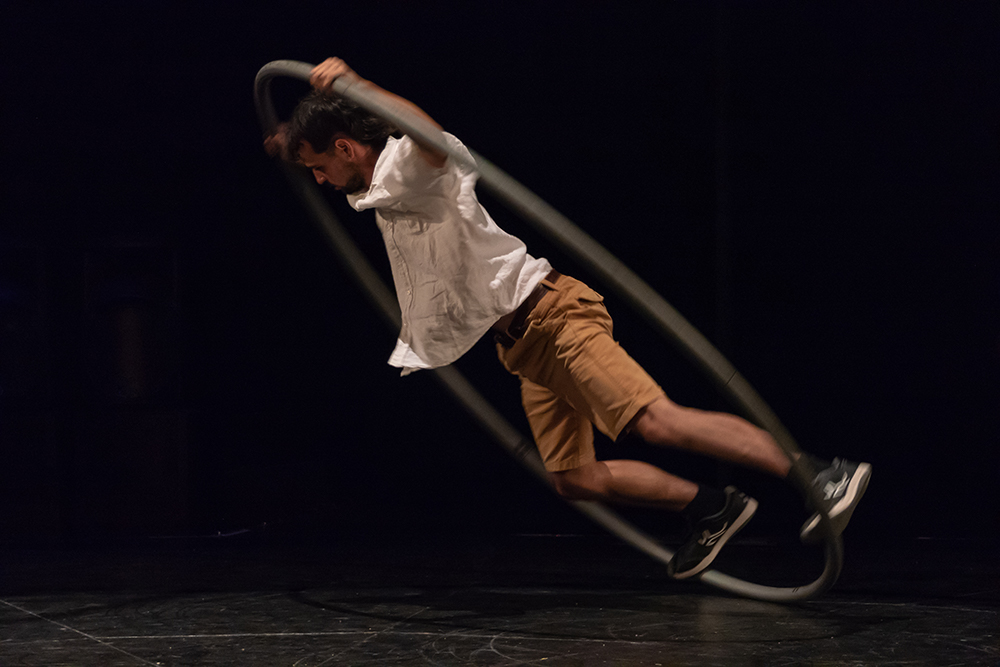


Pròxima Centauri
The scene is full of autumn leaves. A pendulum swings at ground level and removes the leaves with the air it generates. From here the staging plays between what is natural and simple and what is artificial and complex, through elements such as water, leaves, pendulum and a cyr wheel.
With the help of these elements, it explores the languages we use through science and art, seeking in creativity the common point between any scientific and artistic discipline. It takes as a reference the evolution of a star similar to the sun and is reflected in its vital phases from birth to death. Is science simply a way of understanding the art present in nature?
The piece is named after Proxima Centauri: the closest star to our solar system located about 4.2 light-years away and is part of a 3-star system, one of them very similar to our sun.
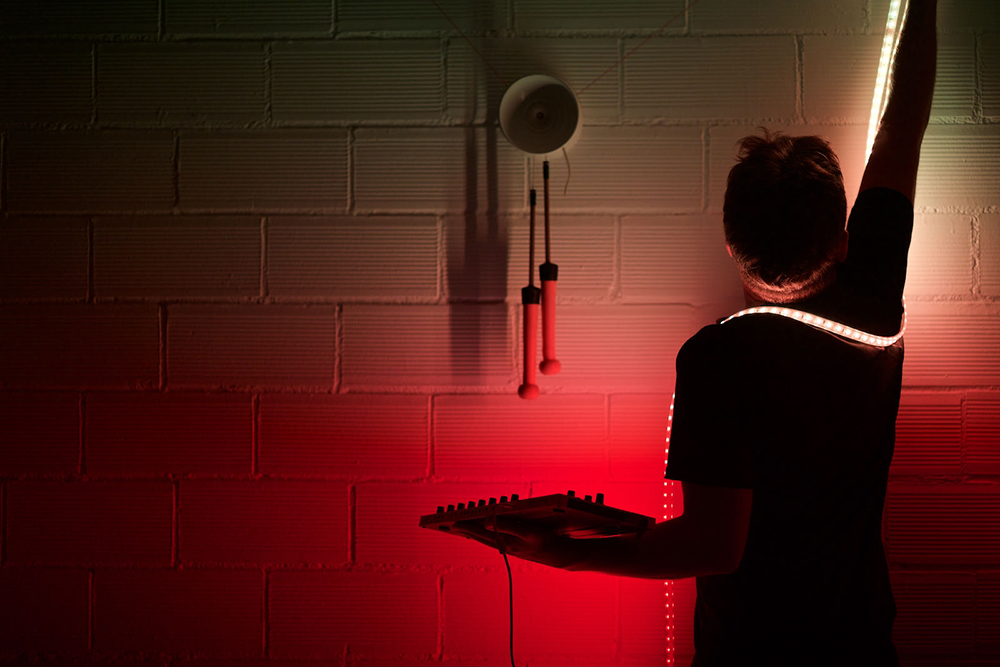


Polychromatic Void
For some time now I have been quite obsessed with ambient music and the generative systems that many sound landscapers use to reach new horizons and textures. After researching a lot about generative music, I decided to do the same with juggling, and look in the direction of a couple of subgenres that I currently call Ambient Juggling and Generative Juggling.
Ambient Juggling is an unpretentious juggling, it is an act that has as its engine the constant dissolution, it exists without having to stand out with respect to the environment. Generative juggling goes a step further, trying to understand the whole environment as a system that gives inputs and receives stimuli, and based on all these parameters it evolves towards unplanned places, but they can be bounded. Polychromatic Void is more aimed at “generative juggling”. Create a system between juggling, juggling, video, music, lighting, code and other elements, where everything is connected and in a constant dialogue.



‘A hang up’
Between newspaper, madness and anxiety, we see the agony of a circus artist who is trapped between his technique and the manipulation of his alter-ego. The artist, as a subject of performance, “believing” in freedom, has been chained to self-exploitation.
The subject of our story – where passion and obsession, conscious and unconscious are mixed – travels on this journey, unable to recognize and understand this constructed reality.
We will look at society from the exhaustion, fatigue and suffocation of overproduction, hyper-performance and hypercommunication, which blur the concept of the real.
What does this tiredness consist of? Is it really possible to accept that today’s freedom is paradoxically a new form of enshacklement? From these questions arrives the project ‘A Hang Up’, a piece of critical and contemporary character.
Image: Clara Pedrol
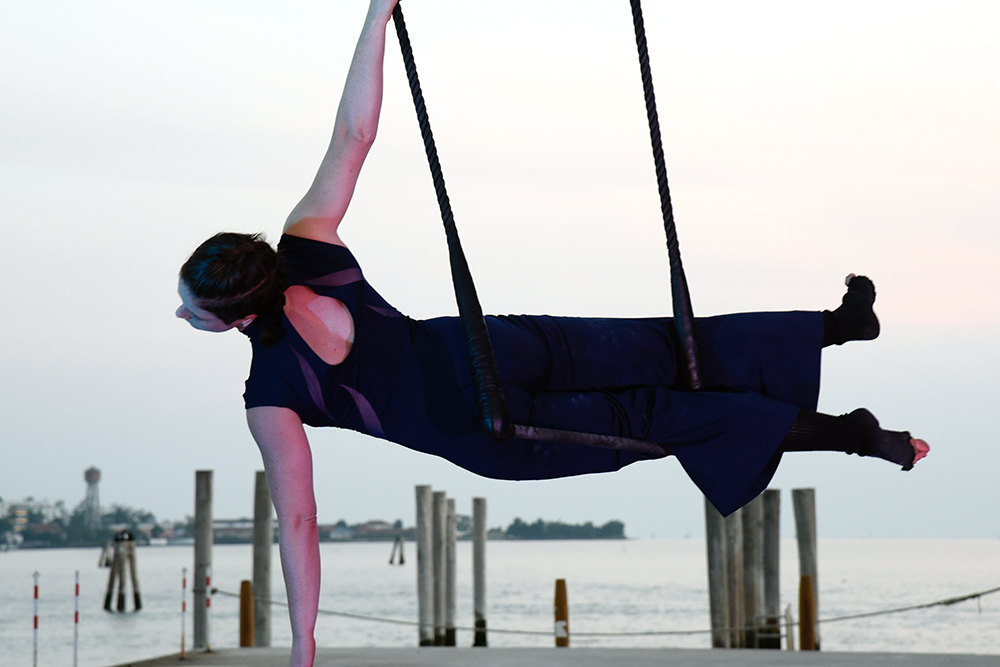


liturgia atómica
‘liturgia atómica’ is a stage play that inquires into and brings together various personal and global concerns through circus, dance and physical theater. Focusing on Butoh and Trapeze techniques, it plays with fragmented memories of a traumatic past and their manifestations in the body.
Through a soundscape that combines whispers, music and whale sounds, the show recreates a kind of ritual from all that is hidden, and opens the door to the possibility of diverse encounters with faith and enlightenment – this in the face of the existential void that is presented by multiple contemporary crises: climate change, violence, the pandemic, etc…
Crèdit: Katarina Rothfjell
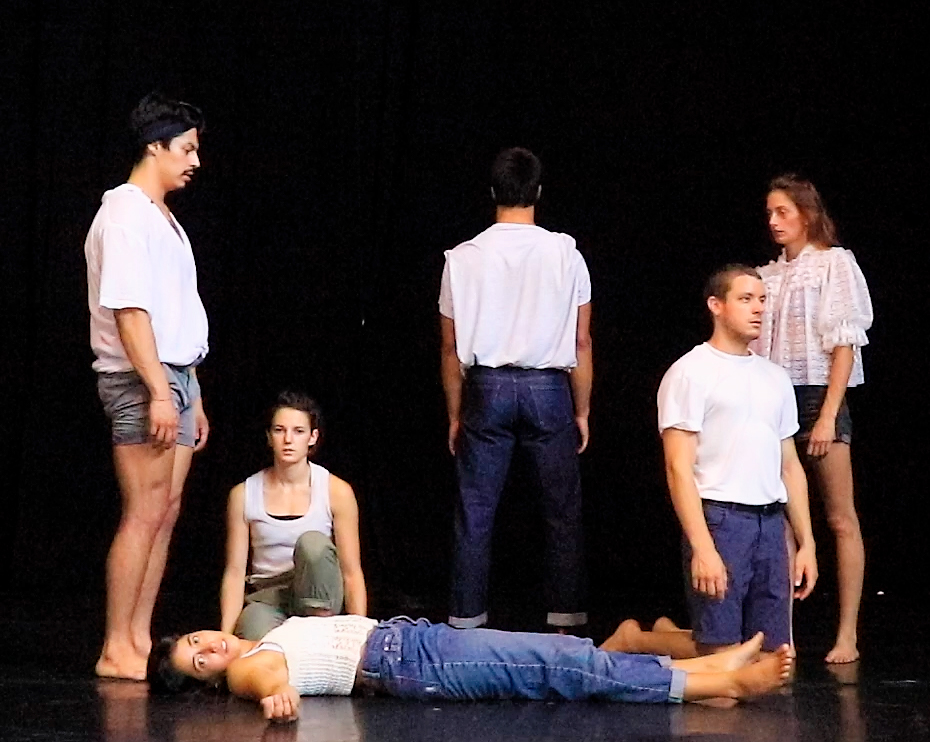


‘Mariage’
Based on the idea that all stage scripts include people, objects, and actions, Collettivo Collettivom creates a code called a “POA system”. This path of conceptual and scenic exploration leads them to a series of reflections: on the behavior of a group in relation to elected rules; on the process of appropriating a rule; on interactions between different communities that do not have the same rules; and on the search for the moment that leads us out of pre-established agreements.
The aim of the research is to observe all the reactions of adaptation, resistance and personal interpretation that occur in this process of translating theory into reality; in this context, it focuses on everything that cannot be controlled or predicted. Despite the codes and formulas: the human variable.
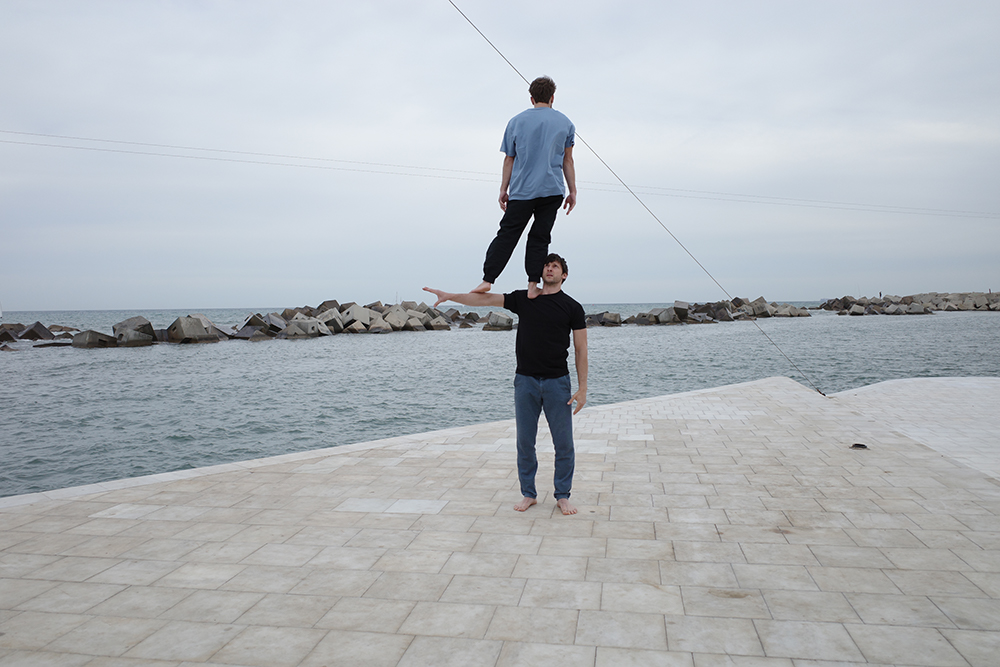


‘Apus’
The Apus apus (black falcon) is a bird that has adapted extremely well to a life lived completely in the air and can spend nine to ten months flying non-stop. That’s why this bird eats, copulates and even sleeps while flying, and only lands to nest.
Through movement, the techniques of hand to hand and handstand, Guillermo and Enrico investigate how they can stay airborne as long as possible without touching the ground. What relationship does the role of the top mounter have with the air? What about his base? How long can the base carry his colleague without him touching the ground? With these premises, the two artists aim to generate a language of the body between them that extends from but is more than mere technique, and to carry to the end the resistance of their two bodies.
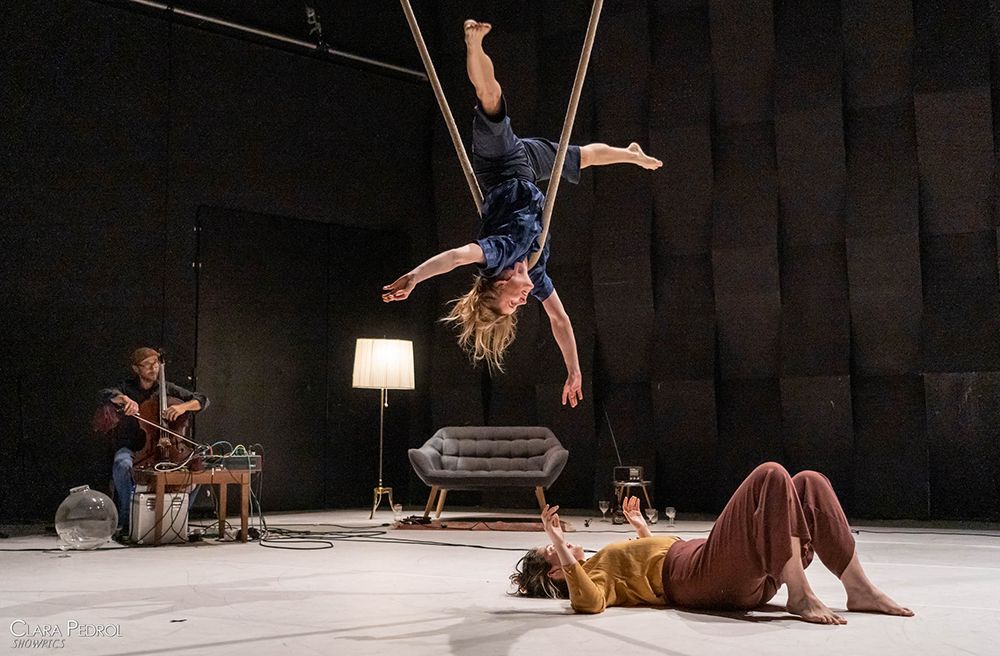


‘Kristall Bohème’
‘Kristall Bohème’ is a research and creation project and a platform for visibility and experimentation for circus language and blown-glass crafts, a trade that is disappearing.
It is a performance with a circus artist, a musician and a lyrical singer which delves into transgenerational memory, roots and footprints. It seeks a balance between what is new and what is old, claiming that the former cannot exist without the latter.
The composition of the show is based on movement and acrobatics on the U-String, fakirism, and object manipulation.
Picture: Clara Pedrol
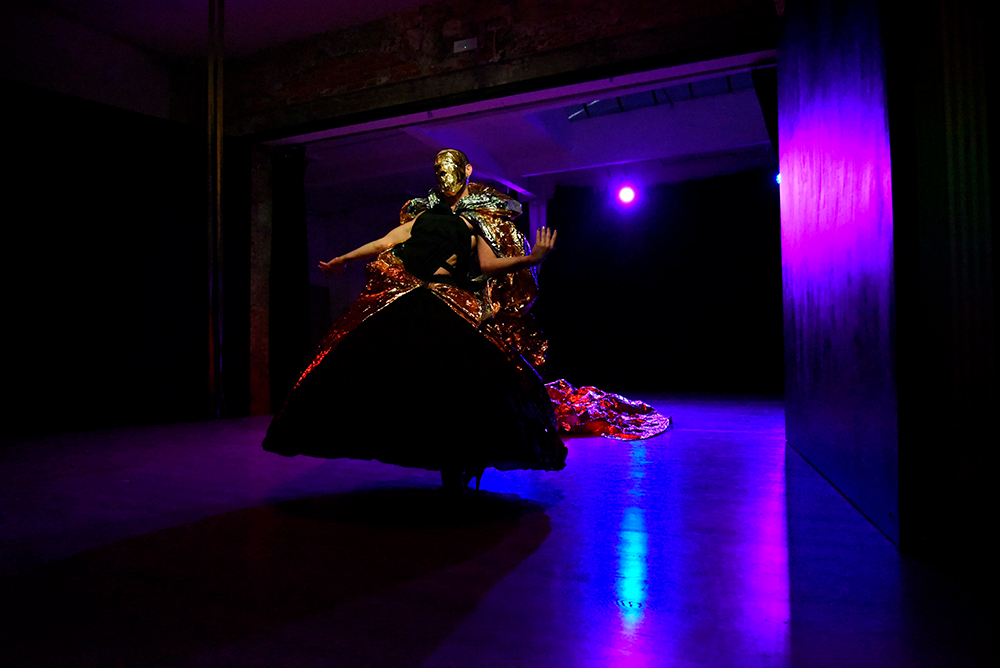


prince_LE_ss
A dark and disturbing tale about the end of a relationship. A sudden bereavement. Something that was there and now is not anymore. A failure. A mismatch. A failed happy ending.
What happens if the Princess finds herself ineluctably without (any) Prince?
Princess as an example, the object of a visual research on this archetype and its fairy-tale, oneiric and unreal environment reinterpreted through the black veil of mourning, obsession and desire, generic character protagonist of a story that wants to tell the attempt not to avoid what socially and emotionally is considered “suffering” that presents itself as a unique and compulsory path to reach a state of lasting well-being.
Discovering that Prince Charming, the longed-for salvation, is not to be found in someone else, in something external, but only in the acceptance of loss, in letting go of what we were convinced was necessary to our existence, in abandoning everything to rediscover ourselves naked and strong enough to live, alone, our own happy ending.
Pivture: Li Mi
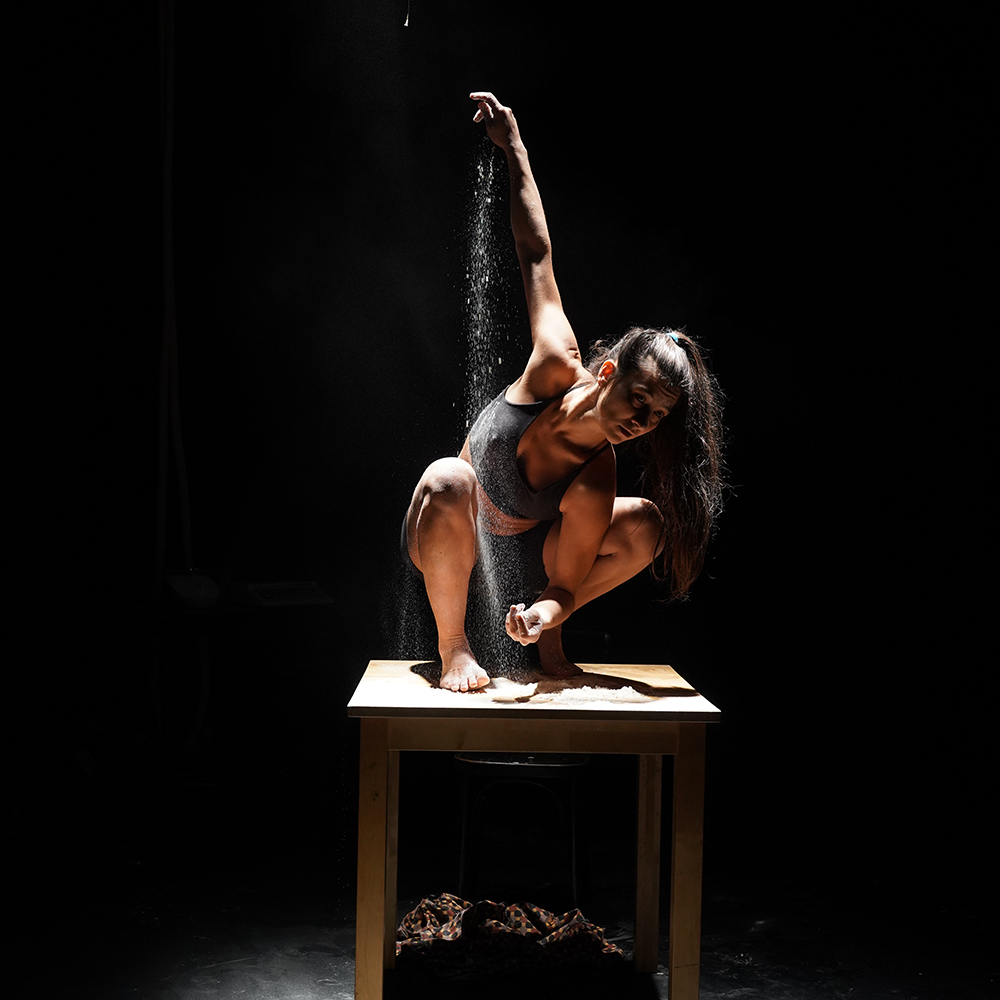


CAí és el nom de la companyia de circ contemporani creada per Sabrina Catalán i Elia Pérez. Utilitzen els aeris com a llenguatge d’expressió amb el qual portar a escena materials personals, reals, vius i espontanis. La companyia crea el 2014 el seu primer espectacle; ‘No es la boca la que va a la cuchara sinó la cuchara que va a la boca’, peça de 60 minuts que es construeix a través de la recopilació d’històries reals. S’estrena el 2015 al Teatro Circo Price de Madrid i es programa en nombrosos festivals i esdeveniments en l’àmbit nacional i internacional. En el seu segon projecte, la companyia s’endinsa en un nou repte en el qual la mirada està focalitzada en el procés creatiu.
‘Masa madre’
‘Masa Madre’ és un procés d’investigació amb l’objectiu de crear un espectacle de sala que combini tècniques aèries, text i moviment d’una forma expressiva, directa i real.
“Masa” fa referència a l’existència mateixa.
“Masa” parla de la caducitat de les coses.
“Masa” dura una cocció.
Ens fa qüestionar el pas del temps.
Sobre com ens afecta la mirada dels altres amb relació a la forma que agafem.
Sobre com ens agrupem o no.
“Madre” fa referència a la maternitat, a com aquesta és viscuda des de dins i observada des de fora.
“Madre” parla d’estats canviants.
“Madre” dura una expulsió.
Ens fa qüestionar una confrontació cap a la persona i/o artista, un regulador de l’ego.
Sobre com ens afecta la vivència.
Sobre una maternitat amarga, dolça, àcida, salada, agria, saborosa…
Firma foto: CdAT
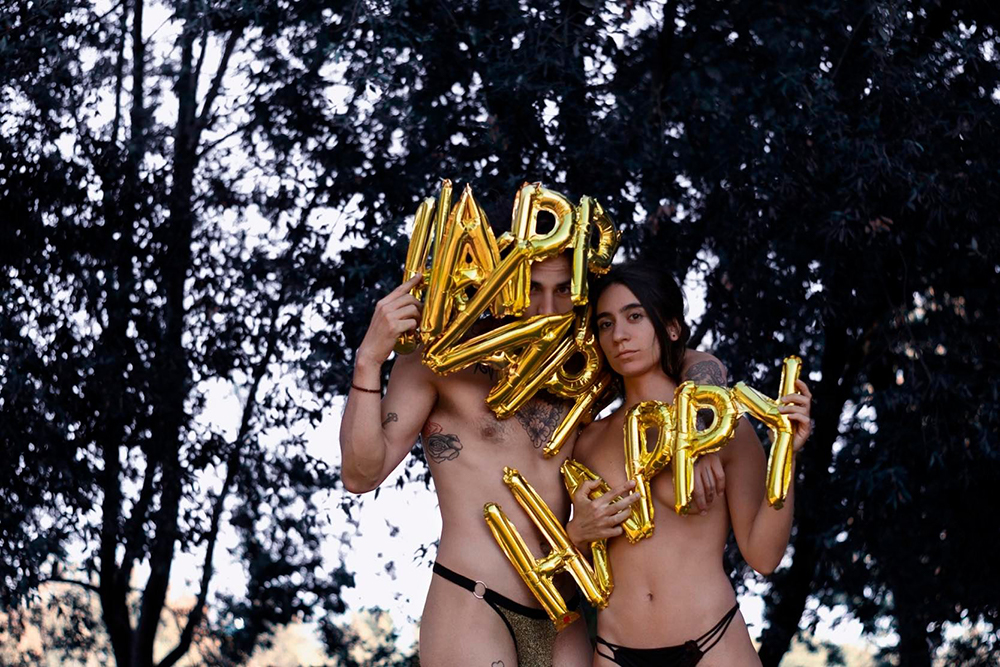


‘Happy’
‘Happy’ is a manifesto. A rupture in the conception of life; the possibility for each person to de-construct his own way of existence. The style, the aesthetic of opposites who meet and converse. It is our naked, rebellious, innocent, spiritual, lucid, and above all human being. A hymn to freedom reconnecting with cruelty. We put our limits, accidents and despair at stake; we claim our dissident, deadly and vulnerable existence as a form of circus.
By accepting who we are in the present moment, the fear of death escapes us. In each situation: new possibilities of changes, reconfiguration and metamorphosis. When all the doors are open, when all the anchors drown and nothing holds us to the ground, we can finally dance without falling.
Picture: Carolina Castro



¡Proyecto SENA!
The creation of a superhero union is the starting point of this piece, which takes place during a union event. With irony and humor, the aim of the characters will be to raise awareness about complex issues in the union sector such as job insecurity, sexism, old age and media power. To this end, theatrical tools will be used on stage as well as a mockumentary with “testimonies” from people involved.
We see heroes bravely perform extraordinary feats; but we also discover their more human side, moving them to intimate spaces where they show us their personal conflicts, their vulnerabilities and their insecurities. This concept of an antihero serves as a metaphor for talking about aging in the artistic field, and especially in disciplines linked to movement. We will be talking about certain physical limitations, injuries and the resistance to disappearing as a result of them. This is a large-format, multidisciplinary piece that fuses architecture, vertical dance, theater and digital arts.
Picture: Frank Díaz
Related news

Open registrations for the P.L.A.T on November 20 with Cia. Croma and Luis Mantilla

Resolution of the call for the Transits Residencies 2026 and the ‘Barcelona Crea Grants – Creation Factories’
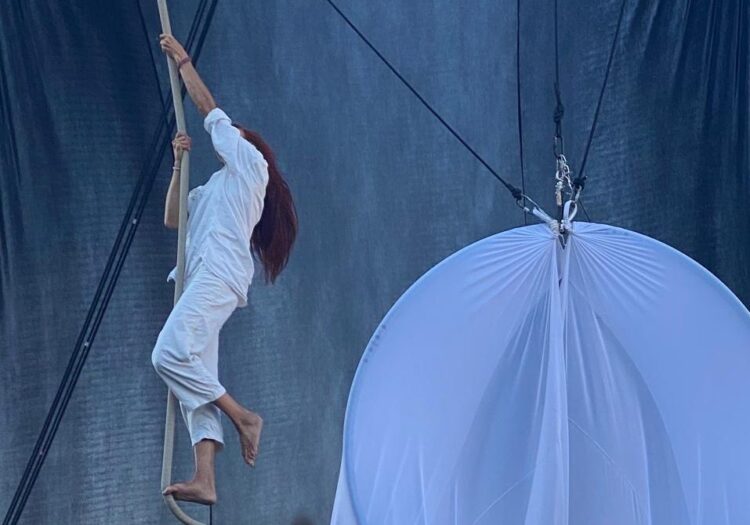
Open call to participate in CirCulem 2026/2027
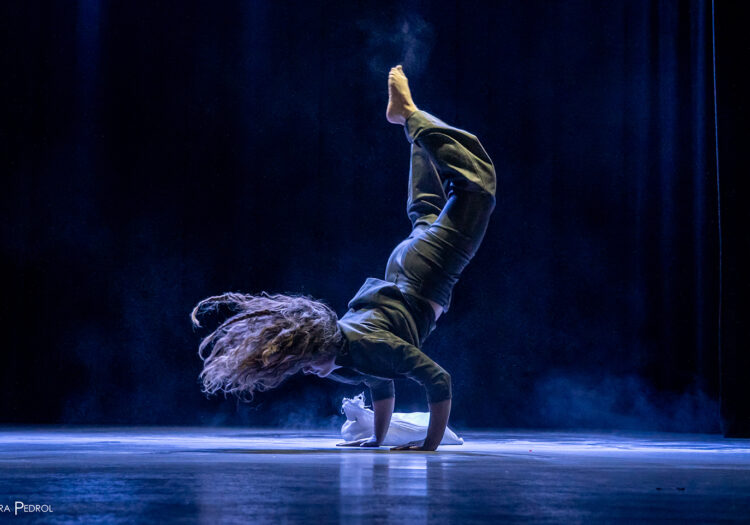
Open Call – Trànsits 2026 Residency Program, supported by the ‘Barcelona Crea Grants – Creative Factories’

Resolution of the 2025 Iberescena Program Call for Proposals

“Can We Create Without Memory?” Check out the 2025 fanzine!
Other residencies
MEDIATION







